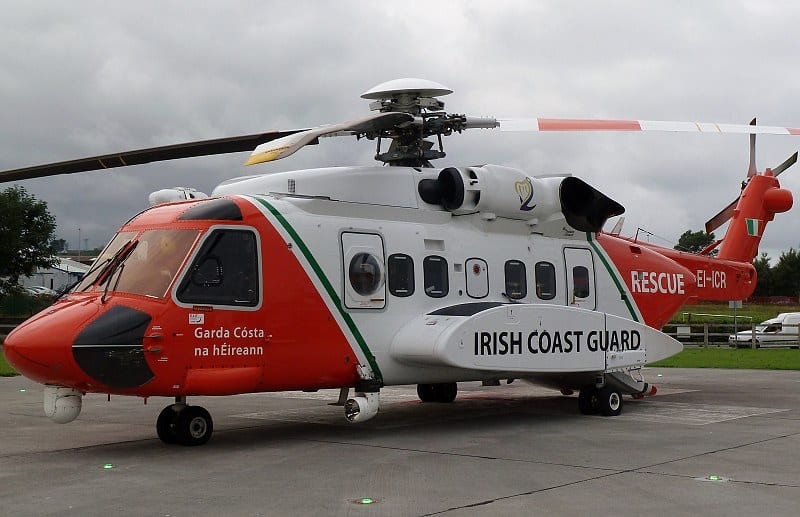Ger Leddin looks back on five incidents that shocked the nation.
A disaster is classified as a sudden accident or a natural catastrophe that causes great damage or loss of life. Unfortunately, Ireland has seen its fair share of disasters over the past decades.
1. Air India Flight 182

On the twenty-third of June 1985, a Boeing 747 crashed into the Atlantic Ocean just of the coast of Ireland while flying through Irish airspace killing 329 people who were travelling from Canada to Delhi in India.
A little later that morning a cargo ship, the Laurentian Forest discovered the remains of the plane and many bodies floating in the water. The Irish Naval Service launched an immediate recovery mission.
The cause of the crash was not immediately known, but world intelligence agencies suspected Sikh extremists of planting a bomb on the aircraft; in the early 1980s India was embroiled in violent civil unrest between Sikh and Hindu factions, this theory was later proved.
Some members of a Sikh terrorist group were arrested and tried for the bombing, but the only person to be convicted was Inderjit Singh Reyat, a Canadian national and a member of the ISYF who pleaded guilty in 2003 to manslaughter. He was sentenced to fifteen years.
In 2006 a Canadian commission was setup to inquire into the bombing and concluded that the disaster resulted from a “cascading series of errors.” In particular, it found that “Canadian intelligence and security agencies had failed to share information with each other.”
2. 2017 Irish Coast Guard Rescue 116 crash

Early in the morning of 14 March 2017, a Sikorsky S-92 helicopter under contract to the Irish Coast Guard crashed into the sea while supporting a rescue operation off County Mayo; all four crew members on board were killed.
The Irish Air Accident Investigation Unit published an initial report the following month stating that the helicopter, call sign Rescue 116, had been en route towards Blacksod Lighthouse in order to refuel and while flying at an altitude of 60 meters it clipped a small Island causing lost control and crashed into the sea.
Rescue 116 did not make any mayday call but disappeared from air traffic control radar around 12:45 am and when it failed to arrive at Blacksod, a declaration of emergency by the Marine Rescue Coordination Centre (MRCC) in Dublin was initiated.
At about 2:00 am that morning Rescue 118, the second Coast Guard Helicopter, which Rescue 116 had been providing high-cover for and which was now on scene, advised that a casualty and debris had been sighted in the water to the south-east of Blackrock.

The RNLI Achill lifeboat recovered Capt Dara Fitzpatrick and cardiopulmonary resuscitation was administered, later she was pronounced dead at Mayo General Hospital, Castlebar.
On the 24th of March divers from the Naval Service recovered the body of Capt Mark Duffy along with the flight data recorder The Families of Paul Ormsby and Ciarán Smith were informed that there was no sign of the two bodies of the winch-crew in the wreckage.
3. Whiddy Island disaster

he Whiddy Island disaster is also known as the Betelgeuse incident after the oil tanker Betelgeuse exploded in Bantry Bay, while moored at the offshore jetty at Whiddy Island, the incident occurred on 8 January 1979 at around 1:00 am.
The explosion was later attributed to the failure of the ship’s structure while carrying out a discharge its oil cargo at the Gulf Oil terminal.
The explosion and fire caused the deaths of 50 people (42 French nationals, seven Irish nationals, and one British national). Only 27 bodies were recovered. A further fatality occurred during the salvage operation with the loss of a Dutch diver.
The Irish government appointed Justice Declan Costello to head a tribunal to investigate the incident, this tribunal took a year to hear evidence and prepare a 480-page report. The report indicated three main factors had contributed to the incident. The poor condition of the Betelgeuse, incorrect unloading sequences and ballasting which resulted in the buoyancy of the hull becoming uneven and the hull therefore strained and inadequate and poorly maintained fire-fighting and rescue systems both on the vessel and on the jetty.
4. The Buttevant Rail Disaster

The Buttevant Rail Disaster was a train derailment which occurred at Buttevant Railway Station, County Cork on the 1st of August 1980.
Seventy people were injured, and eighteen died.
At 12:45 the 10:00 am Dublin to Cork express train entered Buttevant station carrying 230 passengers. The train was mistakenly diverted by a temporary set of points into a siding.
Two coaches and the dining car were totally demolished by the impact. Staff had been expecting a stationary locomotive at the Up platform to move into the siding and had set the points for this without obtaining permission from the signalman.
However, the Dublin/Cork train was travelling too fast to stop and the derailment occurred.
5. The Stardust fire

The Stardust nightclub Fire took place in Artane, Dublin, Ireland in the early hours of 14 February (Valentine’s Day) 1981. 48 people died and 214 were injured.
According to the 2009 Coffey Report, The fire outbreak was caused by an electrical fault in the room beside the roof space which contained dangerously flammable materials including drums of cooking oil.
Most of the dead were from the Artane, Kilmore and Coolock areas of Dublin.
A tribunal of inquiry under Mr Justice Ronan Keane concluded in November 1981 that the fire was probably caused by arson. This finding has been disputed ever since. The inquiry was very critical of the safety standards operating in the club that night. It also emerged that some emergency exit doors had been locked and impeded on the night of the fire.

